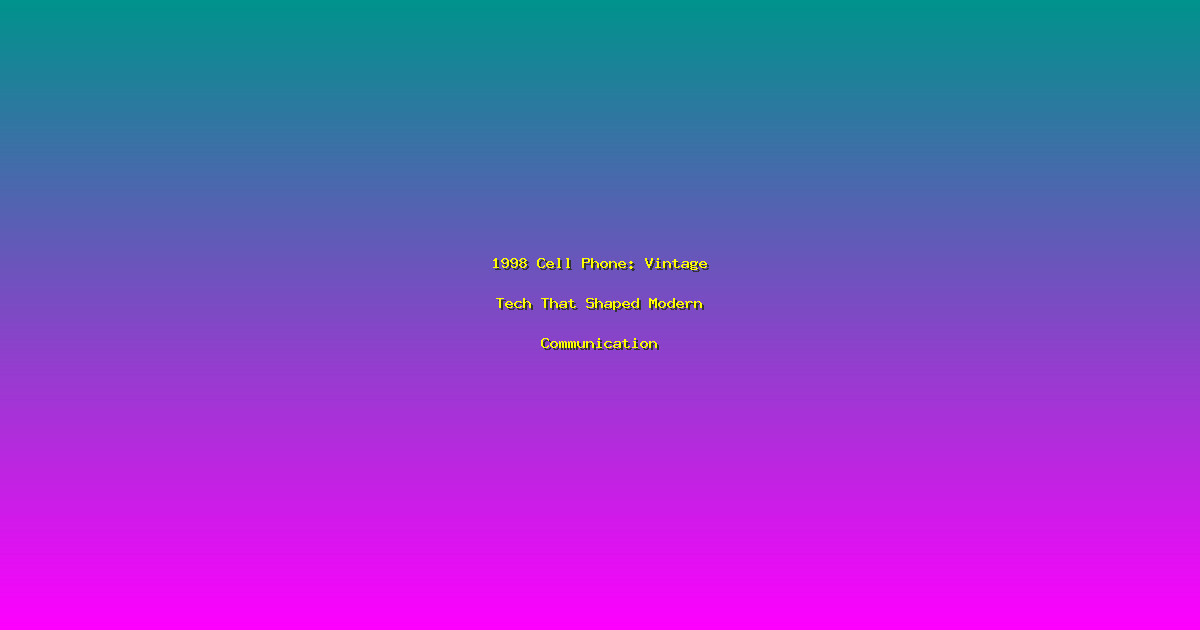1998 Cell Phone: Vintage Tech That Shaped Modern Communication
In the annals of technological history, the 1998 cell phone stands as a pivotal milestone. While it may seem rudimentary compared to today’s sleek smartphones, it played a crucial role in transforming how we communicate. This article delves into the world of early mobile technology, exploring the features, limitations, and cultural impact of the 1998 cell phone.
Design and Features
The 1998 cell phone was a far cry from the smartphones of today. Most models were bulky, often weighing over a pound and measuring about the size of a brick. Despite their clunky design, these phones offered essential features such as voice calls, basic text messaging, and emergency calling. One notable model was the Nokia 6110, known for its iconic green display and affordability. This phone, released in 1999, became one of the most popular devices of its time.
The Impact on Society
The advent of cell phones in the late 1990s marked a significant change in how people interacted with each other. They provided a newfound level of connectivity, allowing individuals to stay in touch while on the move. This shift had profound implications for business, personal relationships, and social dynamics. The freedom to communicate随时随地 reshaped our expectations about availability and responsiveness.
Technological Limitations
Despite their groundbreaking nature, 1998 cell phones came with several limitations. Battery life was short, often lasting only a few hours on a single charge. Data connectivity was non-existent, and internet browsing was a futuristic concept. Text messaging was limited to 160 characters, and there were no social media platforms or multimedia messaging. These constraints meant that the primary function of these devices was voice communication.
Frequently Asked Questions
What was the most popular 1998 cell phone?
The Nokia 6110, released in 1999, was one of the most popular cell phones of its era, known for its affordability and user-friendly interface.
Did 1998 cell phones have cameras?
No, 1998 cell phones did not have cameras. The concept of a mobile phone with a built-in camera was still several years away.
How much did a 1998 cell phone cost?
Pricing varied by model, but a typical 1998 cell phone could range from around $100 to over $500, not including service plans.
Could you use 1998 cell phones internationally?
While many 1998 cell phones were designed to work on multiple networks, international roaming was expensive and often unreliable. Travelers often had to purchase separate international SIM cards or use specialized roaming services.
What was the battery life of a 1998 cell phone?
Battery life was generally short, with most 1998 cell phones lasting only 3 to 5 hours of talk time and 1 to 2 weeks of standby time on a single charge.
Conclusion
The 1998 cell phone, though primitive by today’s standards, was a stepping stone in the evolution of mobile technology. It introduced the concept of portable, always-on communication, setting the stage for the sophisticated smartphones we use today. Reflecting on these early devices helps us appreciate the rapid advancements in technology and their enduring influence on our daily lives.
Explore the fascinating world of vintage technology and consider how far we’ve come in just a few decades. The 1998 cell phone may be a relic of the past, but its legacy lives on in every modern mobile device.
